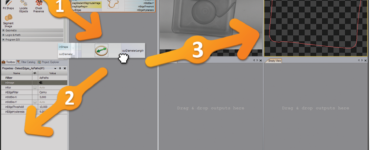In today’s digital age, laptops have become an essential tool for work, entertainment, and communication. With a wide variety of options available in the market, choosing the perfect laptop can be a daunting task. This comprehensive laptop buying guide will walk you through the key factors to consider when purchasing a new laptop, ensuring that you make an informed decision that suits your specific needs and preferences.
1. Determine Your Needs and Budget
Before diving into the world of laptops, it’s crucial to determine your specific requirements and set a budget. Ask yourself questions like:
- What will be the primary use of the laptop? (e.g., gaming, professional work, multimedia, etc.)
- Do you need a lightweight and portable laptop or a more powerful one for heavy tasks?
- What is your budget range?
Defining your needs and budget will help narrow down your options and make the decision-making process easier.
2. Choose the Right Operating System
The operating system (OS) is the software that runs on your laptop and affects its functionality. The three most popular operating systems for laptops are:
- Windows: The most widely used OS, offering a vast range of software compatibility and hardware options.
- MacOS: Exclusive to Apple devices, known for its seamless integration with other Apple products and user-friendly interface.
- Linux: An open-source OS, highly customizable and preferred by tech-savvy users.
Consider your familiarity with different operating systems, software requirements, and personal preferences to make an informed decision.
3. Select the Right Size and Form Factor
Laptop sizes typically range from 11 to 17 inches. The size you choose depends on factors like portability and visual comfort. Smaller laptops are more portable, while larger ones offer a better viewing experience. Additionally, consider the laptop’s form factor, such as traditional clamshell, 2-in-1 convertible, or ultra-slim design, based on your usage preferences.
4. Consider the Processor
The processor, or central processing unit (CPU), is the brain of your laptop. It determines the device’s performance, speed, and multitasking capabilities. Key processor brands include Intel and AMD. For casual usage, an Intel Core i5 or AMD Ryzen 5 processor is usually sufficient. However, for demanding tasks like video editing or gaming, consider higher-end processors like Intel Core i7 or AMD Ryzen 7.
5. Evaluate the RAM (Memory)
Random Access Memory (RAM) affects the laptop’s multitasking abilities and overall performance. For basic tasks, 8GB of RAM is generally adequate. However, if you frequently run memory-intensive applications or engage in heavy multitasking, consider 16GB or even 32GB of RAM for optimal performance.
6. Storage Options: SSD vs. HDD
When it comes to storage, you have two primary options: Solid State Drives (SSD) and Hard Disk Drives (HDD). SSDs offer faster boot times, quicker application launches, and better overall performance. On the other hand, HDDs provide more storage space at a lower cost per gigabyte. Ideally, a combination of both, with an SSD for the operating system and applications, and an HDD for larger files and storage, is the best choice.
7. Display Quality and Resolution
The laptop’s display is crucial for an immersive visual experience. Factors like screen size, resolution, color accuracy, and brightness should be considered. Higher resolution, such as Full HD (1920×1080) or even 4K, ensures sharp and detailed visuals. Additionally, IPS (In-Plane Switching) or OLED panels offer better color reproduction and wider viewing angles compared to TN (Twisted Nematic) panels.
8. Graphics Card
If you plan to use your laptop for gaming, video editing, or graphic-intensive tasks, having a dedicated graphics card is essential. NVIDIA GeForce and AMD Radeon are popular graphics card manufacturers. Ensure that the laptop has a capable graphics card with sufficient VRAM (Video RAM) to handle your specific requirements.
9. Battery Life and Portability
If you need your laptop to be highly portable, battery life becomes a crucial factor. Consider laptops with longer battery life, preferably over 8 hours, for uninterrupted usage on the go. Additionally, lightweight and compact laptops are more suitable for frequent travelers.
10. Connectivity and Ports
Check the available ports on the laptop to ensure compatibility with your devices and peripherals. Common ports include USB Type-A, USB Type-C, HDMI, Ethernet, and an SD card reader. Also, consider connectivity options like Wi-Fi 6 (802.11ax) for faster wireless internet speeds.
Conclusion
Choosing the perfect laptop requires careful consideration of your specific needs, budget, and preferences. By understanding the key factors discussed in this laptop buying guide, you’ll be equipped with the knowledge to make an informed decision. Remember to conduct thorough research, read reviews, and compare different models to find the laptop that best suits your requirements. With the right laptop in hand, you can enhance your productivity, enjoy seamless entertainment, and stay connected wherever you go.










